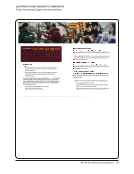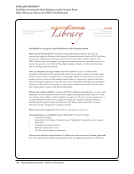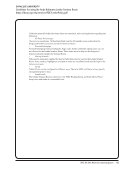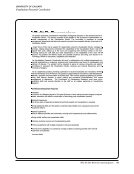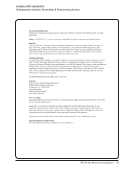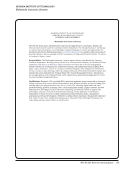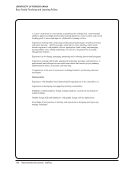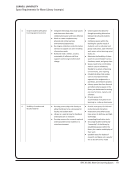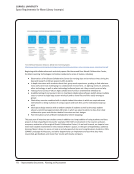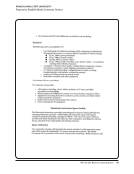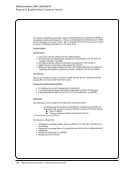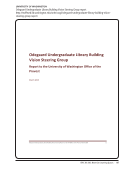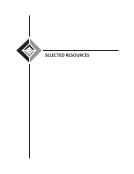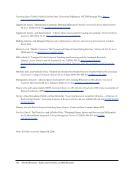SPEC Kit 342: Next-Gen Learning Spaces · 49
addressed the ways in which environments for the preparation, production, and consumption of food both reflect and
affect those processes. Individuals who planned to attend the program were asked to post a picture of themselves
eating on campus to a dedicated social media site. After a more formal presentation, the speakers did a spontaneous,
onsite analysis of the pictures posted to social media. All programs are developed and coordinated by the Libraries’
manager for library communications and public programming.
Occasionally N=1
Booths and movable tables
Rarely N=3
Family Friendly Study Center
Graduate reading room
Honors Quiet Study
Comments N=3
Art installations/exhibits, author talks and lectures happen throughout the library, but not in the IDEA Commons.
One open quiet study space is used for programming due to its south-facing location and view. Programming is minimal
and is scheduled around user needs to keep disruption to a minimum.
Some traditional learning spaces are used for programming. Exhibit space is available in a variety of libraries and the
function of exhibit programming is available across campus, but not explicitly part of “next-generation” learning spaces.
The undergraduate library has a lot of informal exhibition of student work throughout the library, but no formal gallery
or exhibition program.
16. Please indicate who is involved in developing/providing programming for library learning spaces.
Check all that apply. N=70
Staff Category Develop programming Provide programming N
Librarians 68 67 69
Library staff 52 60 62
Archivists 53 54 56
Campus/parent institution partners 51 48 53
Other academic institution partners 27 31 32
Other external partners 19 23 25
A full-time position dedicated to programming 21 13 21
Total Responses 69 69 70
addressed the ways in which environments for the preparation, production, and consumption of food both reflect and
affect those processes. Individuals who planned to attend the program were asked to post a picture of themselves
eating on campus to a dedicated social media site. After a more formal presentation, the speakers did a spontaneous,
onsite analysis of the pictures posted to social media. All programs are developed and coordinated by the Libraries’
manager for library communications and public programming.
Occasionally N=1
Booths and movable tables
Rarely N=3
Family Friendly Study Center
Graduate reading room
Honors Quiet Study
Comments N=3
Art installations/exhibits, author talks and lectures happen throughout the library, but not in the IDEA Commons.
One open quiet study space is used for programming due to its south-facing location and view. Programming is minimal
and is scheduled around user needs to keep disruption to a minimum.
Some traditional learning spaces are used for programming. Exhibit space is available in a variety of libraries and the
function of exhibit programming is available across campus, but not explicitly part of “next-generation” learning spaces.
The undergraduate library has a lot of informal exhibition of student work throughout the library, but no formal gallery
or exhibition program.
16. Please indicate who is involved in developing/providing programming for library learning spaces.
Check all that apply. N=70
Staff Category Develop programming Provide programming N
Librarians 68 67 69
Library staff 52 60 62
Archivists 53 54 56
Campus/parent institution partners 51 48 53
Other academic institution partners 27 31 32
Other external partners 19 23 25
A full-time position dedicated to programming 21 13 21
Total Responses 69 69 70









































































































































